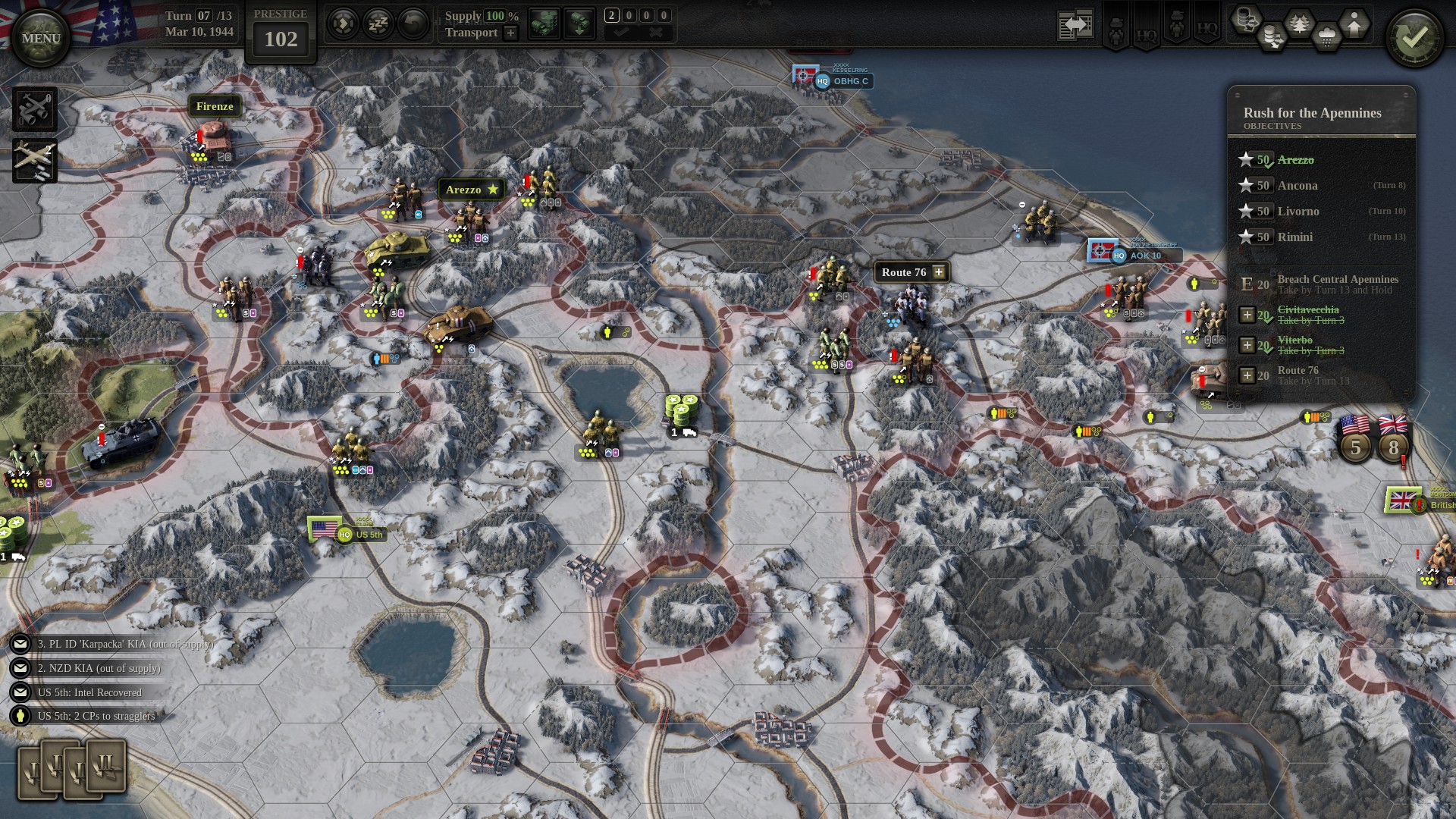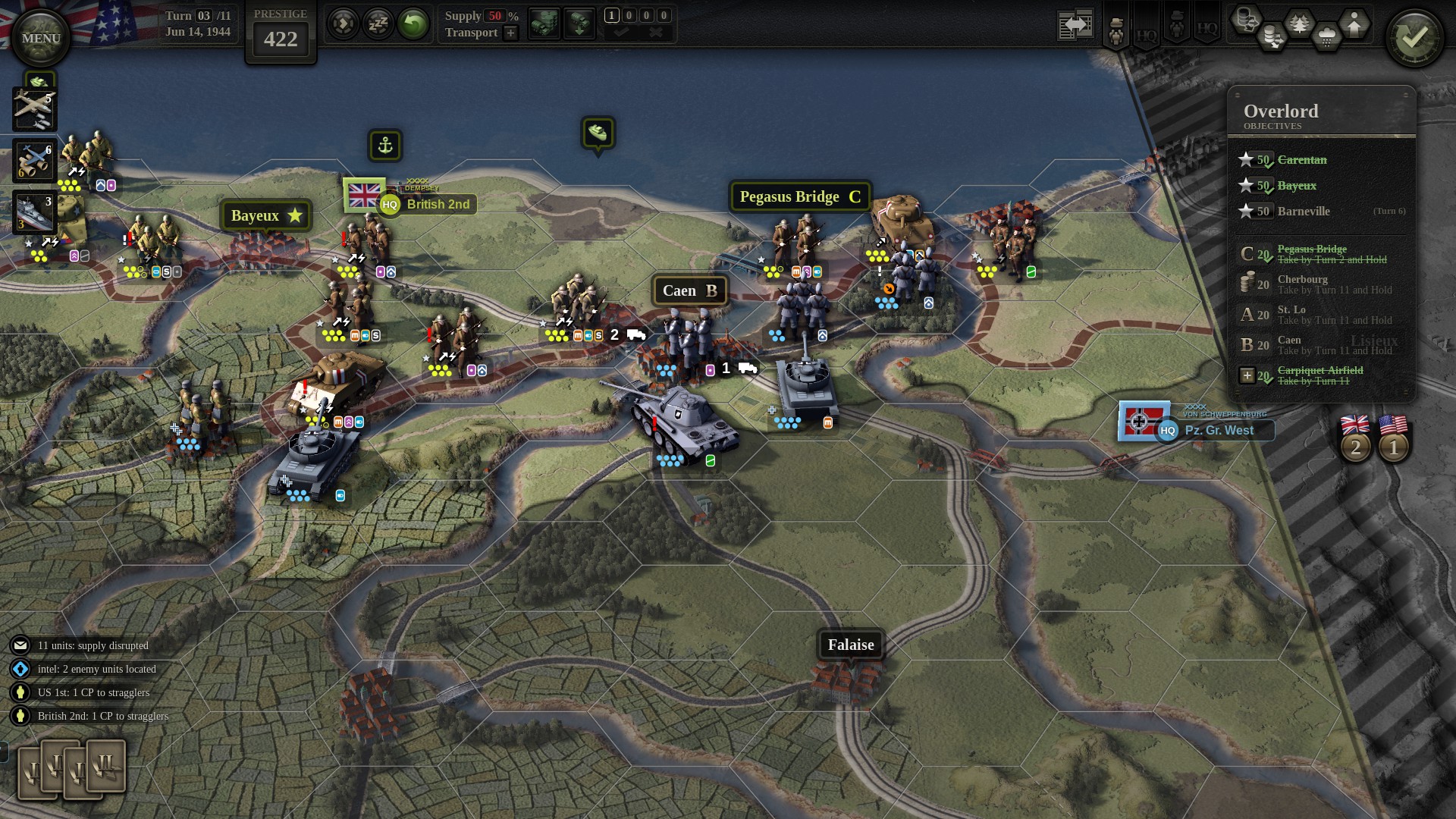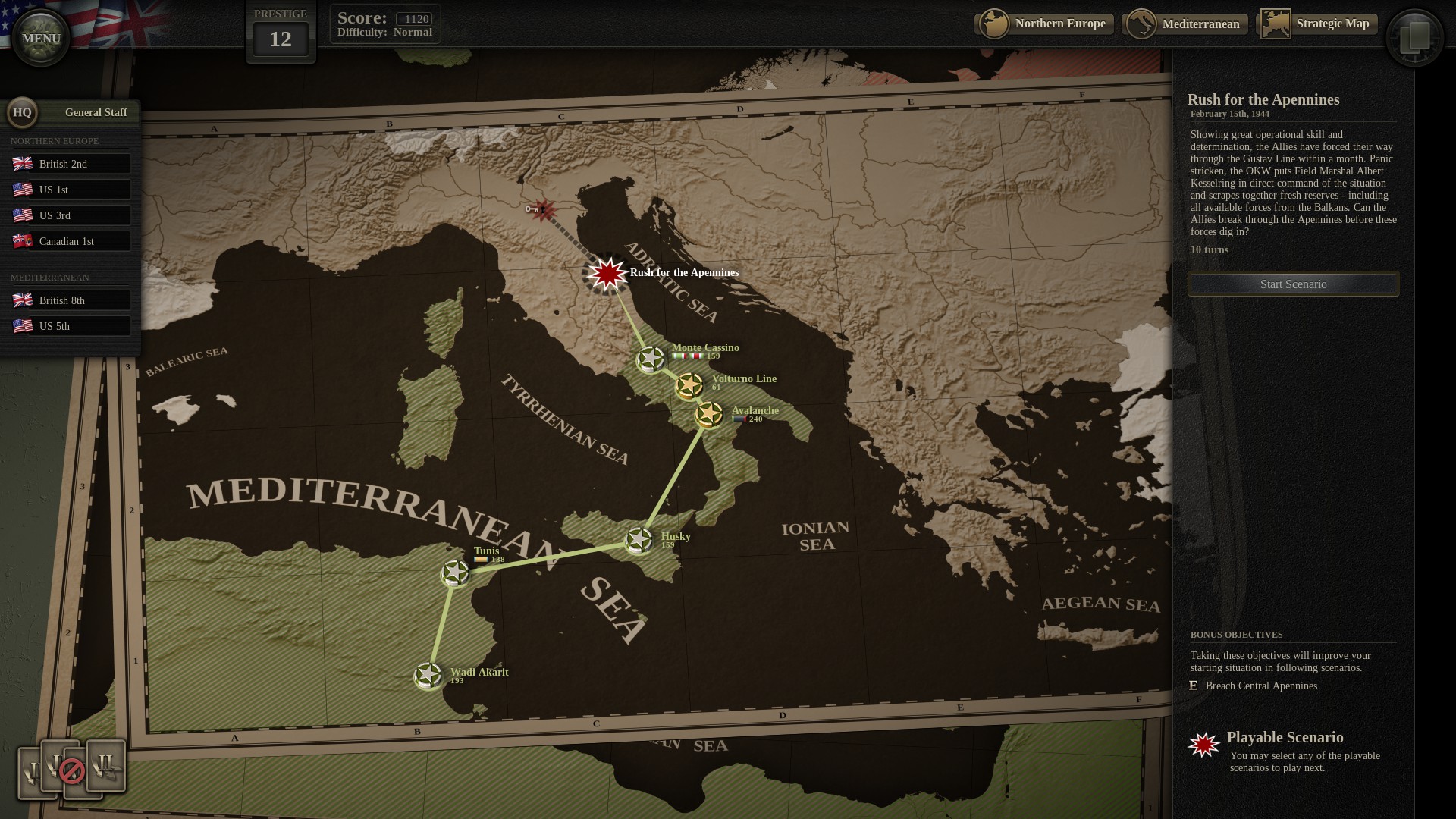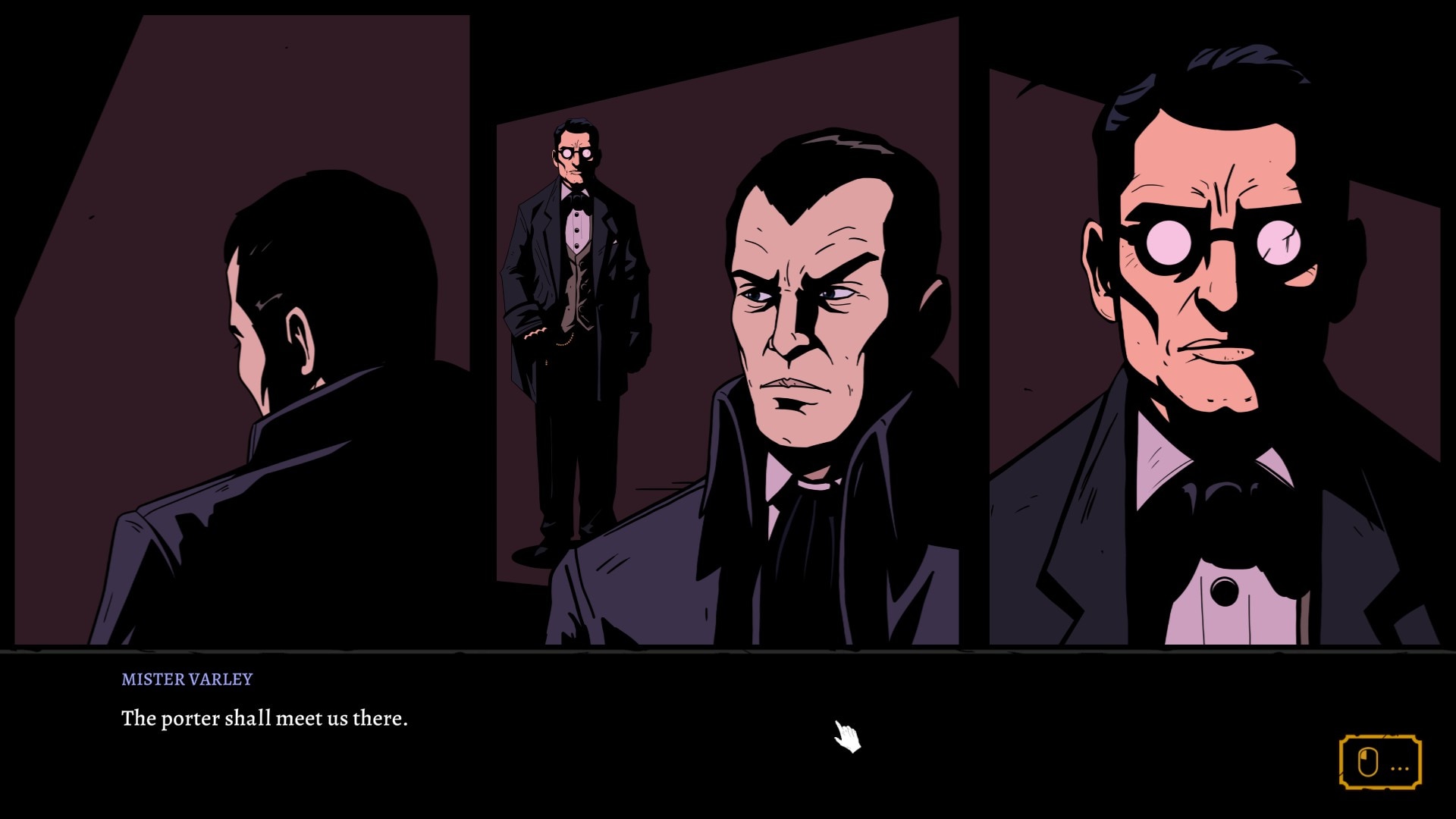Our Verdict
Wargames don't see a lot of innovation, but Unity of Command 2 builds new things out of familiar parts.
PC Gamer's got your back
What is it? An approachable operations-scale World War 2 wargame.
Expect to pay $27/£23.49
Developer 2x2 Games, Croteam
Publisher 2x2 Games
Reviewed on Intel Core i5-3330, GeForce GTX 1070 Ti, 8GB RAM
Multiplayer? Hotseat only.
Link Official site
One of my high bars for a strategy game's sequel is that I can unreservedly recommend the game over its predecessor. Unity of Command 2 is one of those games; somewhat to my surprise, as I was initially wary of all the new mechanics being added to an otherwise delightfully simple wargame. Unity of Command 2 is a new wargaming standard in every aspect. It has good mechanics, a fun campaign structure, and it even looks quite good to boot. This is a pure wargame: it's about moving troops and tanks and fighting with no consideration for politicking or ceasefires.
Unity of Command 2 has the same baselines that made the first UoC a success. Every division on the battlefield is made up of sections called steps, each represented by a little dot below the unit's model. Sometimes divisions have 'specialist steps' of attached assets—like a detached tank company temporarily assigned to support an infantry division. Steps are either active, a full circle, or suppressed, an empty one. When a unit attacks or defends its active steps are multiplied by their combat value, totaled, and compared to the other unit's total for the odds of various results. If that sounds complicated, it's not, because the game just shows you the likely results. Sure, there's a detailed combat resolution table buried in the manual, but you can happily play this (quite complex) wargame without ever looking at it. That feels very good.
On the other hand, it doesn't do a great job of teaching itself. The basics like combat are easy, but expect some trial-and-error frustration while you figure out how to reassign steps, balance logistics, juggle command range and upgrade your divisions. More detailed, frequent tooltips would have been nice. The interface is good enough though and doesn't fight the game design—it's certainly one of the best for a wargame of this kind.
The combat lets you really focus on what an operations-scale game does best. This is a game about orchestrating breakthroughs, exploiting gaps with armor, and strategically blocking chokepoints. The terrain of the western front isn't about vast encirclements, it's about pushing over the mountains of central Italy or struggling through the bocage in Normandy. I found especial pleasure in capturing railway depots and balancing supply dumps to keep up with my advancing forces. A well-planned tank breakthrough once allowed me to take a third of italy with little effort by racing up the coast and cutting off the enemy's supply—though the paratroops that held the vital bridges along the way didn't make it. The strategy is very simple to manage but just complex enough that it feels like a challenge.
That's not to say the game as a whole lacks complexity. Every section of your army has an HQ unit, a non-combat location that your logistics, intelligence, and command efforts come from. HQs can use their very limited command points to have divisions execute special maneuvers—suppressing artillery fire to pin down enemies, feint attacks, and set-piece assaults to reduce enemy fortifications. For example, I specialized my US 5th Army as a fast force that hit hard and excelled at breaking single points. I consistently used it to exploit gaps, pushing armored divisions into attacks on favorable terrain, but ordering them to make fighting withdrawals in the event of counterattacks. Meanwhile my British 8th Army was an iron wall of artillery that could grind down even the most determined, entrenched enemy. HQs can also deploy portable bridges, organize emergency supplies, and organize motor transport for slow infantry. As you play through the game's campaign these HQs level up, gaining new abilities and more command points.
The first Unity of Command's very basic combat felt like a puzzle sometimes, but the mechanics are refined in UoC2 so that even the initial strategic situations in a scenario can have wildly different solutions, something the first game lacked. It's much harder—maybe impossible—to find the most efficient way to win any one of this game's battles.
Take the early missions in Tunisia, for example. It might seem obvious that you simply need to break the enemy's apparently weakest point, and that's just what I did. It worked, but I lost lots of troops to later fighting because that weak point is quite far from your actual objectives. Next time around I reassigned engineers from all over my forces to divisions sitting opposite a bunch of dangerous Panzer divisions with a river in between. The engineers allowed them to ignore the river attack penalty and break a hole. Driving tanks through the hole, I captured the enemy's supply base at Tunis and cut off over half their forces from supply—from there they just starved and stopped fighting.
Keep up to date with the most important stories and the best deals, as picked by the PC Gamer team.
The centerpiece of play is the War in the West campaign, spanning North Africa in 1943 to the close of the western front in 1945. It's divided into phases of two or three historical operations, like invading Sicily then charging "up the boot" to Rome. During missions you complete objectives—always with a time limit—to earn prestige. Prestige is spent on reinforcements and upgrades for your troops, like artillery pieces and tank companies as specialty steps. Prestige is always in demand, though. Between each set of operations is a conference phase, during which you purchase HQ upgrades and one-shot card powers using prestige.
Customizable factors like cards and specialists and upgrades lend a lot of flexibility to scenarios and campaigns. There are even a few points of historical divergence, where doing better than the historical figures allows you to take alt-history paths like pushing the Italian front to the alps by mid-1944. I rarely feel the need to replay a wargame of this scope, but I already know I'll be sinking a lot of time into Unity of Command 2 because it's clear that strategy isn't subordinate to simplicity—and that's rare these days.
Wargames don't see a lot of innovation, but Unity of Command 2 builds new things out of familiar parts.
Jon Bolding is a games writer and critic with an extensive background in strategy games. When he's not on his PC, he can be found playing every tabletop game under the sun.





